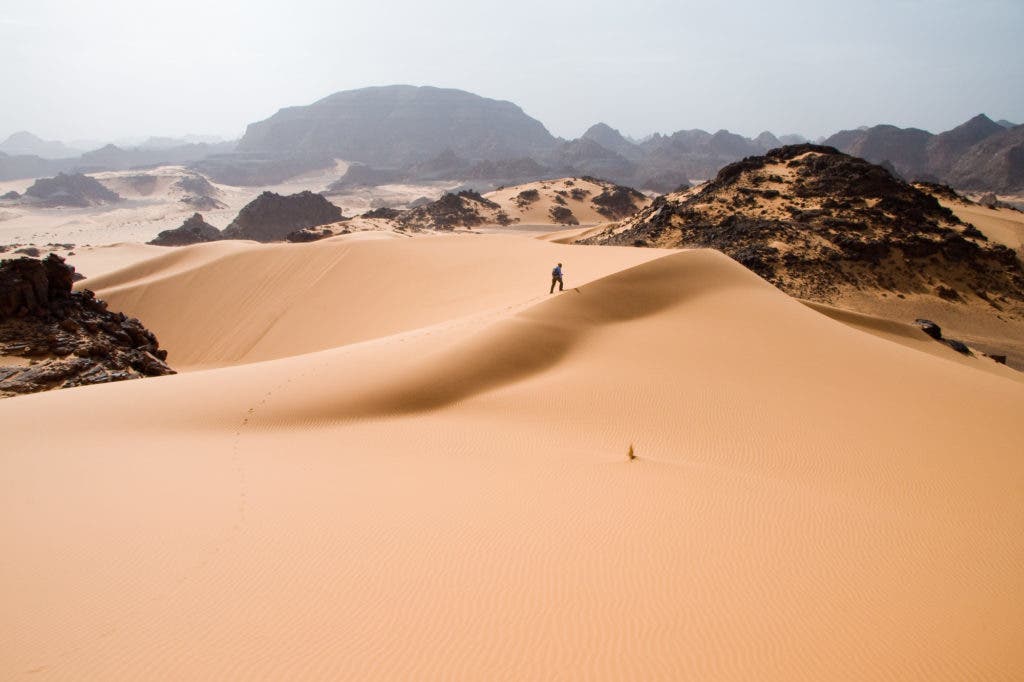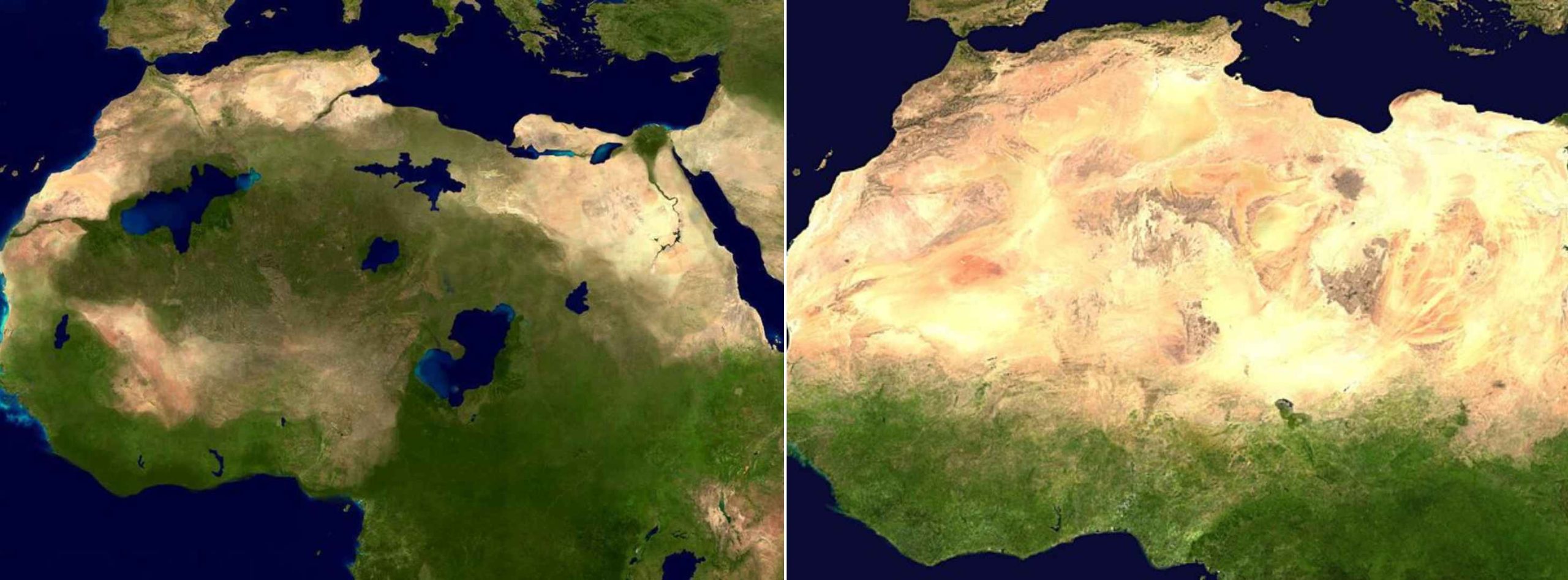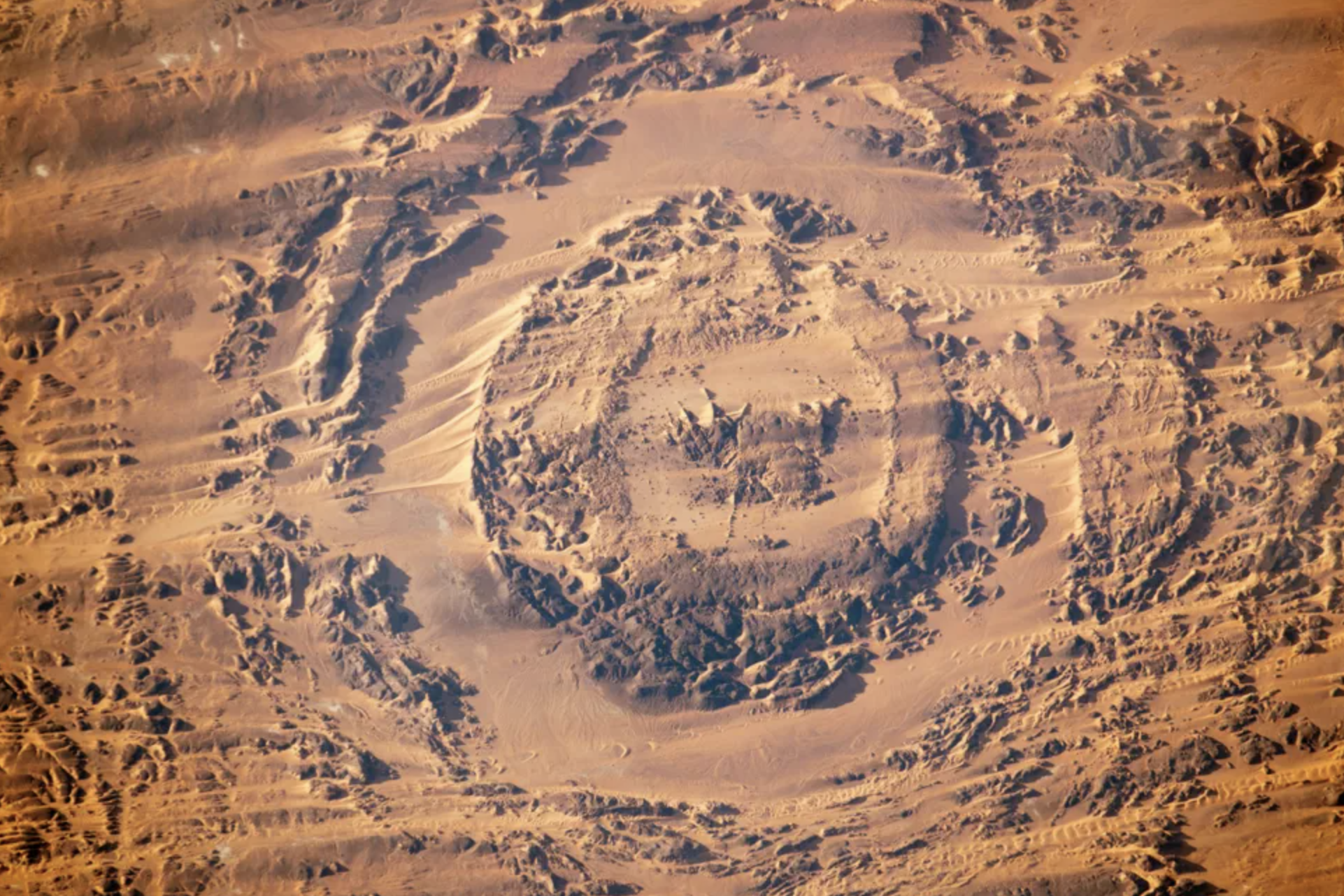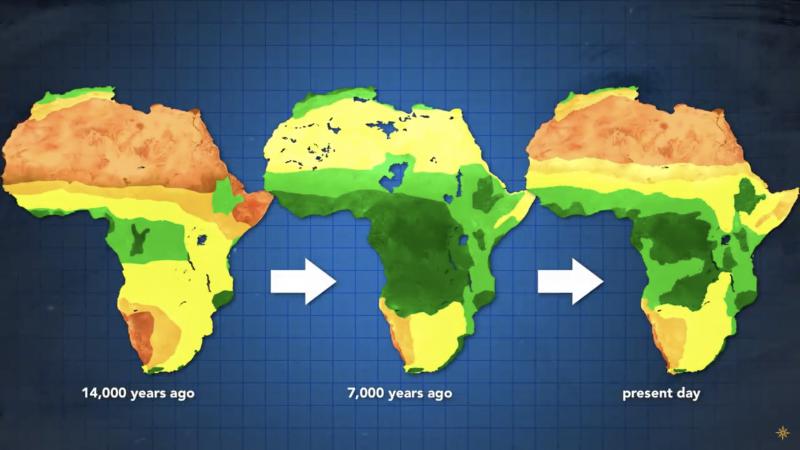The Sahara swings between ‘lush’ and ‘desert’ every 20,000 years, in sync with the Earth’s tilt
Few places on this planet are as inhospitable as the Sahara desert. This is why it’s so intriguing to learn that the Sahara, and most of North Africa for that matter, used to be a lush region filled with a diversity of plants and wild animals. What’s more, this transition occurred relatively recently, in the order of thousands of years, judging from fossils and even rock paintings made by artists who lived in now abandoned settlements.
Now, MIT researchers claim that the region may be swinging between desert and lush conditions every approximately 20,000 years due to changes in the Earth’s axial tilt.

Tadrart Acacus desert in western Libya, part of the Sahara. Credit: Wikimedia Commons.
Each year, tons and tons of Saharan dust are swept by northeastern winds into the Atlantic Ocean forming thick sediment deposits on the ocean floor. By analyzing these dust layers, it’s possible to infer many qualities about the climate they originate from. For instance, thick dust layers indicate arid times, whereas thinner layers are a sign of a wetter climate.

Some of the sediment core samples retrieved off the coast of West Africa can trace back Sahara’s climate history over millions of years. Previously, such analyses suggested that the Sahara oscillated between wet and dry climates every 100,000 years or so — something which scientists had pinned down to ice age cycles. Thick layers of dust seemed to coincide with periods when the Earth was more covered in ice, wheres less dusty layers corresponded to interglacial periods.

This correlation, however, does not bode well with our present understanding of the Saharan climate, which ought to be mainly driven by the region’s monsoon season. A periodic change in precipitation is determined by the tilt of the planet’s axis, which exposes some regions of Earth to more sunlight than others.
“We were puzzled by the fact that this 20,000-year beat of local summer insolation seems like it should be the dominant thing controlling monsoon strength, and yet in dust records you see ice age cycles of 100,000 years,” David McGee, an associate professor in MIT’s Department of Earth, Atmospheric and Planetary Sciences, said in a statement.
McGee and colleagues devised a new technique which reinterprets the values of Saharan dust cores deposited over the last 240,000 years. The new method hinges on the measurement of the concentration of a rare isotope of thorium.
Thorium is produced in the ocean when small amounts of radioactive uranium dissolve in seawater, then quickly attaches itself to sinking sediments, i.e. Saharan dust. This way, it’s possible to infer how much dust was accumulating during a particular era by studying the concentration of thorium in a particular sediment layer. The slow accumulation of sediment is associated with a higher concentration of thorium, and vice-versa.
Using thorium as their proxy for dust deposition (and, hence, Sahara’s historical climate), the MIT research team found that some peaks of dust in the cores may be false positives due to carbonate dissolution. With the confounding effect removed, the researchers found that the Sahara shifted from wet to dry climates every 20,000 years, in sync with monsoon activity and the planet’s periodic tilting of its axis.
This time series could be useful not only for understanding the history of the Sahara Desert (or luxurious plains, alternatively) but also that of our species. Humans emerged out of multiple hotspots in Africa and migrated towards the Middle East, and from there to Europe, Asia, and the rest of the world. These migrations may have been facilitated by the Sahara’s periodical mood swings.
“We can now produce a record that sees through the biases of these older records, and so doing, tells a different story,” McGee says. “We’ve assumed that ice ages have been the key thing in making the Sahara dry versus wet. Now we show that it’s primarily these cyclic changes in Earth’s orbit that have driven wet versus dry periods. It seems like such an impenetrable, inhospitable landscape, and yet it’s come and gone many times, and shifted between grasslands and a much wetter environment, and back to dry climates, even over the last quarter million years.”
That being said, the Sahara is also influenced by the global climate. According to a 2018 study, human-induced climate change contributed to a 10% expansion of the Sahara desert’s surface over the past hundred years.
And, of course, some of you might be wondering: when will the Sahara’s climate revert back to lush conditions? Scientists believe that up until 10,000-11,000 years ago, the Sahara looked more like today’s African savannah. This means that we still have another 10,000 years before North Africa becomes a giant oasis again.
The MIT study was published in the journal Science Advances.
Related Post
A shocking documentary proves that mermaids do exist
SHOCKING Revelation: Thuya, Mother of Queen Tiye, Was the Grandmother of Akhenaten and Tutankhamun—What Ancient Egyptian Secrets Did She Leave Behind?
Breaking News: Astonishing Discoveries at Karahan Tepe Confirm an Extraterrestrial Civilization is Hiding on Earth, and NO ONE Knows!
Breaking News: Researchers FINALLY Discover U.S. Navy Flight 19 After 75 Years Lost in the Bermuda Triangle!
NASA’s Secret Investigation: Uncovering the Astonishing Mystery of the UFO Crash on the Mountain!
Explosive UFO Docs LEAKED: Startling Proof That Aliens Ruled Ancient Egypt!
